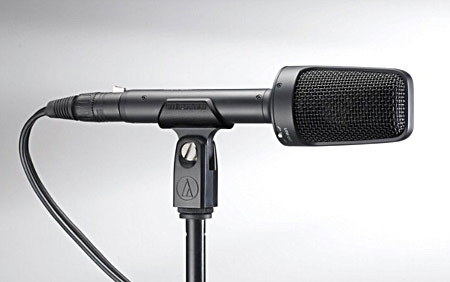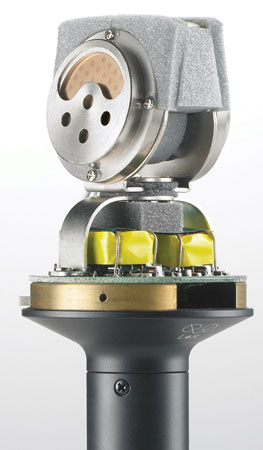Blog
Occasional posts on subjects including field recording, London history and literature, other websites worth looking at, articles in the press, and news of sound-related events.
The Audio Technica BP4025: your reliable stereo workhorse
ONCE IN A while a comment or an email arrives asking whether the Audio Technica BP4025 mic is any good. I’ve used it to make a number of recordings and can recommend it as a reliable and versatile workhorse.
The BP4025 is a single-point stereo mic which runs on 48V phantom power and, in Britain, should cost less than £450 new. Its main plus points are good build quality, quite a spacious-sounding stereo image, and low self-noise.
The first thing you’ll notice about the mic is that it has a solid, sturdy feel. The BP4025 is just over 7 inches or 18 cm long, and weighs 9.5 oz or 269 g. Its weight, build and business-like black finish challenge you to get some work done.

The BP4025 uses large-diaphragm capsules set in a coincident X/Y pattern at a mutual angle of 160°, rather greater than that used by other coincident X/Y stereo mics such as the Rode NT4. Here’s what the capsules look like minus their protective grille:

Despite the two diaphragms being almost back-to-back with one another, the mic avoids producing a hole in the centre of the stereo image. How does it do it?
1. Sound pressure waves propagated through the air impact on the electrostatically-charged diaphragms. 2. Then a miracle occurs. 3. The resulting electrical signal reaches your recorder’s A-D converter.
If only I knew how to be more explicit about stage 2. Instead, here are a couple of dawn chorus recordings to give you an idea of the mic’s performance outdoors. The first was made in October before last in Abbey Wood, south-east London:
The next recording was made in April this year in the woods at Sydenham Hill. The mic was positioned on a tripod stand with an embankment about ten metres behind it, so the birdsong (and peacock shriek, but that’s another story) that you’ll hear was mostly in front and to the sides of the mic.
The large diaphragms enable the BP4025 to have a low stated self-noise level of 14dB. Rob Danielson, who contributes regularly and very helpfully to the Naturerecordists group on Yahoo and who knows a lot about recording, reckons the true level could even be slightly lower. This recording was made in a cramped passage in the Chislehurst caves and there’s no noticeable hiss in the brief silences between drips:
The BP4025 puts plenty of oomph into the lower frequencies similar to an omnidirectional mic. Traffic rumble can sound very prominent in urban recordings if you don’t use the built-in roll-off switch. I’m pretty sure I didn’t bother with the roll-off for this recording of an automatic car wash going through its cycle:
The BP4025 fits inside a Rode blimp without any difficulty. But because the mic is head-heavy, it’s a good idea not to walk around for too long with it fixed inside the blimp, otherwise it can sometimes work its way loose of the suspension.
I’ve had the pleasure of listening to some very beautiful recordings made by skillful and experienced recordists using more expensive microphones. The BP4025 isn’t in the same league as a pair of spaced Sennheiser MKH20s, or a mid-side array using Schoeps mics. But you can take it anywhere and for what it costs it’s excellent value for money.
ABOUT SOUND
FIELD RECORDINGS
The balloonist in the desert is dreaming
The Binaural Diaries of Ollie Hall
GEOGRAPHY AND WANDERINGS
The Ragged Society of Antiquarian Ramblers
LONDON
ORGANISATIONS
Midwest Society for Acoustic Ecology
World Forum for Acoustic Ecology